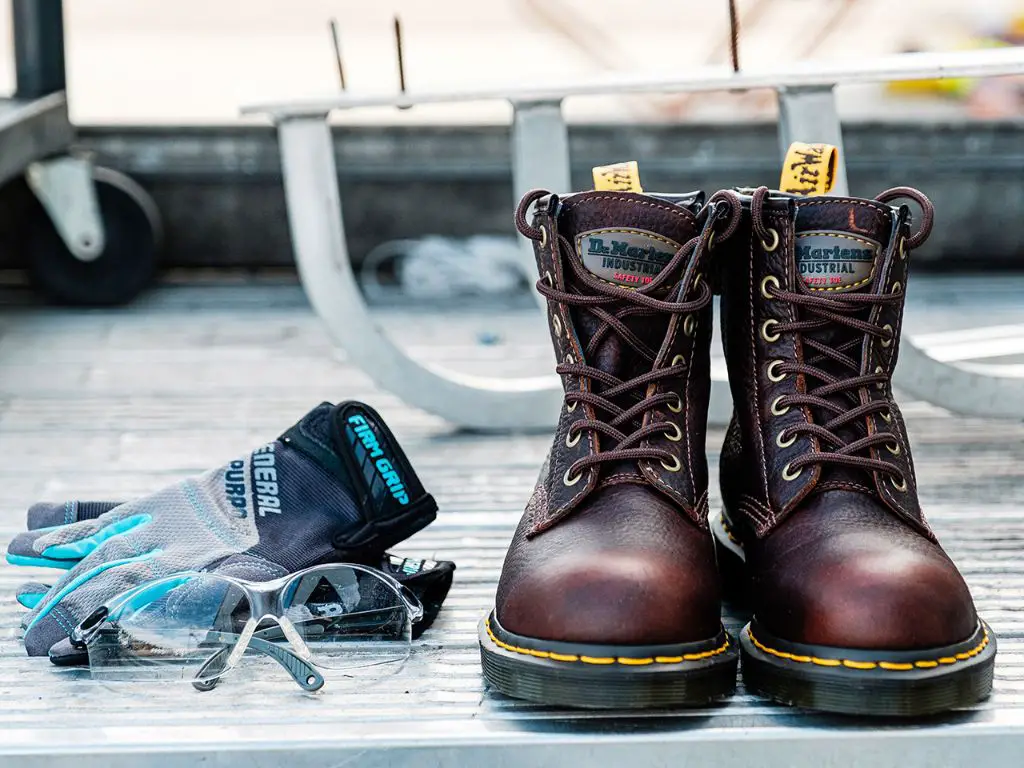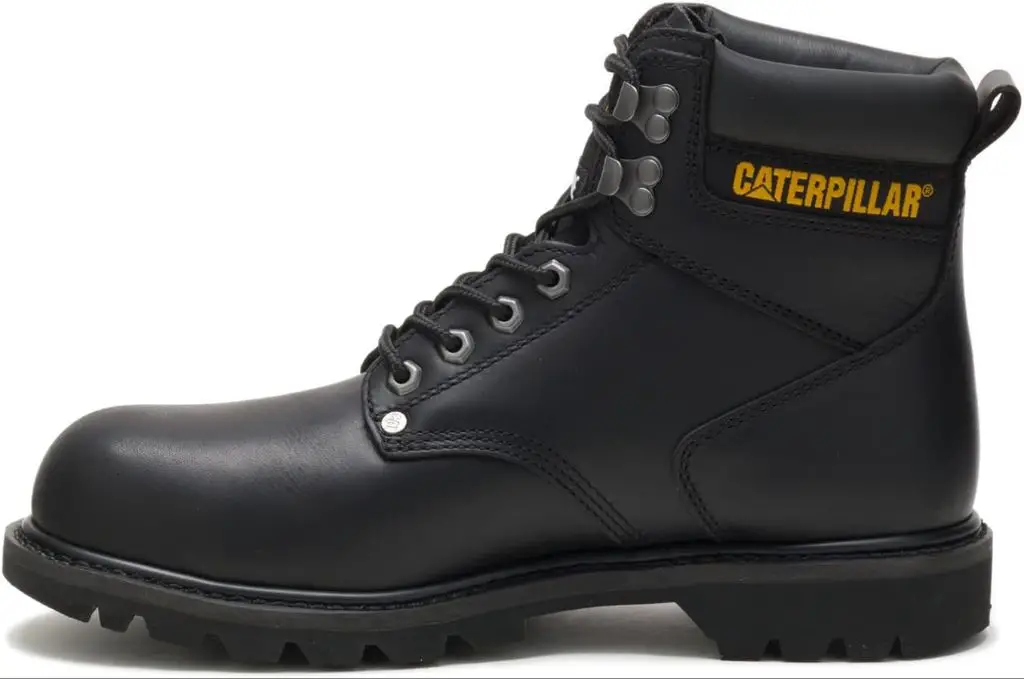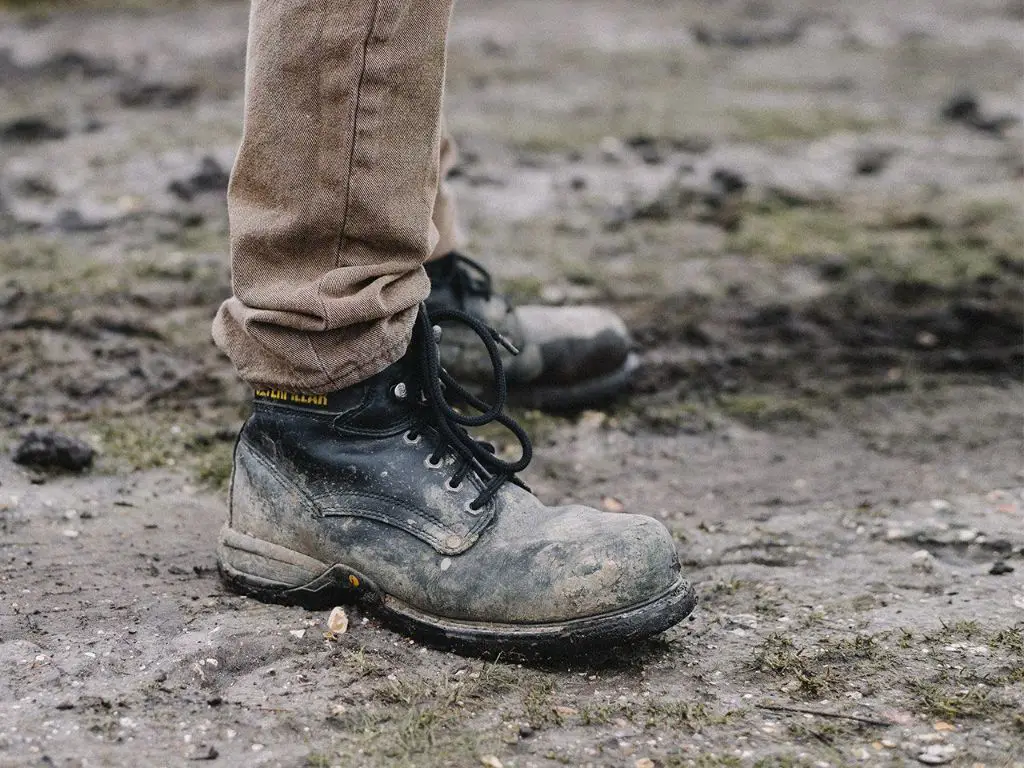Steel toe shoes refer to sturdy footwear that has a protective toe cap made of steel embedded in the front part of the shoe. The purpose of the steel toe cap is to protect the wearer’s feet from impacts, compression injuries, and punctures. Steel toe shoes are an essential piece of personal protective equipment in many industrial and construction jobs where heavy items may fall on workers’ feet or other foot injuries may occur.
The key benefits of steel toe shoes include:
- Preventing crushing injuries and trauma to the toes if something heavy is dropped. The steel cap absorbs and distributes the impact.
- Providing protection against puncture wounds from nails, tools, and other sharp objects that may pierce the footwear’s upper material.
- Reducing risk of foot fractures and dislocations when compressed or pressed by heavy loads.
- Meeting mandated safety regulations for foot protection in many workplace environments with injury risks.
- Giving workers improved stability and slip resistance through sturdy soles and materials.
Overall, steel toe shoes are an essential component of occupational and personal safety for millions of industrial workers worldwide.
Steel Toe Shoes Overview
Steel toe shoes were originally invented to protect workers’ feet from injuries and accidents in industrial workplace settings. The first known versions emerged in the late 19th century, around the time of the Industrial Revolution, when factory work and heavy machinery became more common. While the exact origins are unclear, most sources cite the late 1800s as the time period when steel toe boots and shoes first entered the market.

According to Wikipedia, the purpose of steel toe reinforcement is to protect the feet from compression injuries or injuries caused by falling objects. Steel toes provide impact and compression protection by dispersing the force of impact and reducing pressure on the foot. They effectively shield the toes from injuries like contusions, lacerations, and fractures.
Industries like construction, manufacturing, agriculture, oil/gas, mining, and transportation commonly require steel toe shoes as mandatory protective footwear. Regulations and safety standards in these sectors have made steel toes ubiquitous in many workplace environments where heavy equipment and tools pose hazards.
Steel Toe Construction
The construction of the steel toe on safety shoes is engineered for maximum protection while remaining lightweight and comfortable. Steel toes are typically constructed from steel or a composite material like Kevlar or carbon fiber.
Steel used in steel toe shoes is often high grade and heat-treated for strength. According to SafetyMK, common steel types include titanium alloy steel and manganese steel, which offer impact resistance while remaining flexible.
The steel toe box is shaped into a cup design that wraps around and on top of the toes for protection from falling objects and compression. However, steel toes leave the rest of the foot exposed. The steel cup is bonded to the base of the shoe’s upper. It may have perforations for breathability.
Composite toe shoes offer similar protection to steel toes while being non-metallic. The composite material enables shoes to be lightweight while also preventing metal detection issues. However, composite toes may not withstand impacts as well as steel over time.
Safety Regulations
The Occupational Safety and Health Administration (OSHA) has standards for protective footwear under 29 CFR 1910.136. OSHA requires that protective footwear comply with any of the following consensus standards:
ASTM F2413-18 “Standard Specification for Performance Requirements for Protective (Safety) Toe Cap Footwear” (1)
ASTM F2412-18 “Standard Test Methods for Foot Protection” (1)
These standards require safety-toe shoes to meet minimum compression and impact ratings to protect against foot injuries. Most safety toe shoes meet 75 pound compression and 75 pound impact ratings (2).
In addition to federal OSHA standards, some states have additional safety regulations for protective footwear. For example, California OSHA requires safety shoes to be worn by employees in construction, longshoring and cargo handling operations (3).
Some industries and companies also have their own protective footwear requirements that go beyond OSHA, such as requiring metatarsal guards or shoes rated for electrical hazards.
Types of Steel Toe Shoes
There are a few main types of steel toe shoes:

Standard Steel Toe
The most common type of steel toe shoe contains a steel toe cap that meets ASTM standards for impact and compression protection (ASTM F2413). The steel toe cap is designed to prevent injury if heavy objects roll onto or fall on your feet. Standard steel toes provide strength and durability but can get cold in winter. Popular brands like CAT and Timberland offer steel toe work boots and shoes.
Composite Toe
Composite toe shoes use a non-metallic material like carbon fiber, Kevlar, or fiberglass for the protective toe cap instead of steel. According to National Workwear, composite toes are lighter but thicker than steel and don’t conduct temperature like metal. Composite safety toes provide similar protection to steel but won’t trigger metal detectors.
Aluminum and Titanium Toes
Aluminum and titanium are also used, though less commonly, for protective toe caps. As explained by NORTHFORTY, aluminum toes are thicker but lighter than steel. Titanium offers similar advantages with the highest strength-to-weight ratio. However, aluminum and titanium are more expensive than steel.
Industry Use Cases
Certain industries require the use of steel toe shoes for worker safety and protection. Here are some of the most common industries that utilize steel toe shoes:
Construction
The construction industry relies heavily on steel toe shoes to prevent foot injuries (https://oxfordsteels.com/blogs/news/which-fields-require-steel-toe-shoes). Construction sites contain many hazards like heavy tools, nails, and debris that can lead to crushing or puncture wounds on the feet. Wearing steel toe boots allows workers to complete jobs safely while reducing the risk of serious foot injuries from impacts or compression.
Manufacturing
Manufacturing facilities require steel toe shoes to protect workers from workplace hazards (https://www.froutlet.com/what-industries-require-steel-toe-safety-boots). Assembly lines, machine operation, material handling, and other manufacturing tasks all present risks of falling objects, impacts, cuts, and compression injuries. Steel toes provide an essential layer of protection for manufacturing employees.
Mining
Underground mining operations rely on sturdy steel toe boots to safeguard workers’ feet. The mining environment contains many crushing and impact dangers from heavy equipment, falling objects, and general debris. Steel toe shoes provide critical impact protection and compression resistance even in rugged mining conditions.
Everyday Use Considerations
Many people wonder if steel toe shoes can be worn casually outside of work. There are some pros and cons to consider when wearing steel toes for everyday use:
Some of the cons include that steel toe boots can be heavy, rigid, and less comfortable for all-day wear. The steel toe box can also put pressure on toes and feel restrictive for casual activities. Additionally, most steel toe shoes have a rugged, utilitarian look that may not align with someone’s personal style.
However, there are pros as well. Many steel toe boots today come in more stylish designs that can work for casual wear, including options like Red Wing and Thorogood boots. The toe protection can provide peace of mind and comfort for active lifestyles. There are also composite toe options that are lighter than steel. Ultimately, choosing proper fit and break-in time can improve comfort for all-day wear.
Cat Intruder Shoes
Cat Footwear has a long history of making quality steel toe work boots and shoes. The Cat Intruder line is one of their most popular steel toe models (The Intruder – Footwear). These shoes offer the perfect blend of comfort, durability, and protection.

The Intruder features (Invader & Intruder):
- Steel toes to protect the feet from impact and compression
- Slip-resistant outsoles for traction on slick surfaces
- Waterproof leather or nylon uppers
- Removable polyurethane footbeds for cushioning
- Flexible and lightweight construction
The steel toe offers ASTM-approved protection, while the sole provides electric hazard protection. Intruders have a rugged yet athletic look suited for industrial work sites or everyday wear (Caterpillar Invader Men’s Steel Toe Work Shoe).
With durability, safety features, and all-day comfort, the Cat Intruder line represents the brand’s tradition of high-quality work shoes.
Buying Considerations
When selecting steel toe shoes, there are a few important factors to consider for safety and comfort:
Proper fit is crucial. Steel toes do not stretch like normal shoes, so make sure to try them on at the end of the day when your feet are largest. Wear the socks you’ll wear at work to get the right fit. Allow about a half size more room than normal shoes since the steel toe box does not flex. Your toes should have wiggle room and not feel squeezed. According to Sutton’s Shoes, “Safety Toe shoes need to be fit about a half size larger than normal footwear. Since there is hard cap in shoe there is no stretch in toe box area.”
Breaking in new steel toes properly is also key. Expect some discomfort at first. Integrity Staff recommends wearing them around the house to gradually break them in before extended wear at work. Consider adding supportive insoles for maximum comfort.

Think about work conditions. On concrete or uneven terrain? Look for thick, lugged soles. In slick/wet settings? Choose shoes with slip-resistant treads. Hot environment? Opt for breathable, moisture-wicking materials. Cold weather? Insulated boots will keep your feet toasty. Prioritize safety features and support based on your unique needs.
While shopping, walk around and make sure heels don’t rub the insole. Your foot should feel secure without pinching or discomfort. With the right pair, properly broken-in, steel toe shoes can provide excellent foot protection without sacrificing comfort.
Conclusion
Proper foot protection is vital in many occupational settings and industrial environments. When shopping for steel toe work boots or shoes, look for well-known brands that adhere to established safety standards. Choose boots with sturdy soles and steel toes reinforced with durable materials like thermoplastic polyurethane (TPU). The style and breathability of the uppers is also an important consideration for comfort during long workdays.
Steel toe shoes provide impact and compression protection by enclosing the toes in durable steel caps. However, they don’t safeguard other parts of the foot from common workplace hazards. That’s why many employers require steel toe boots with thick soles, ankle support, metatarsal guards and slip-resistant treads. Take time to find the right protective footwear for your job duties and always follow safety protocols on the worksite.

